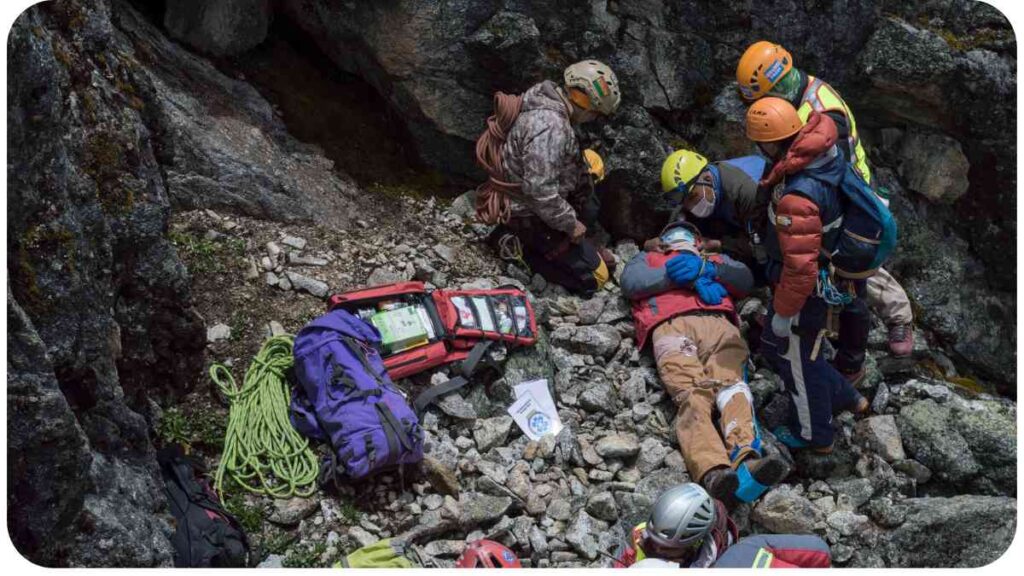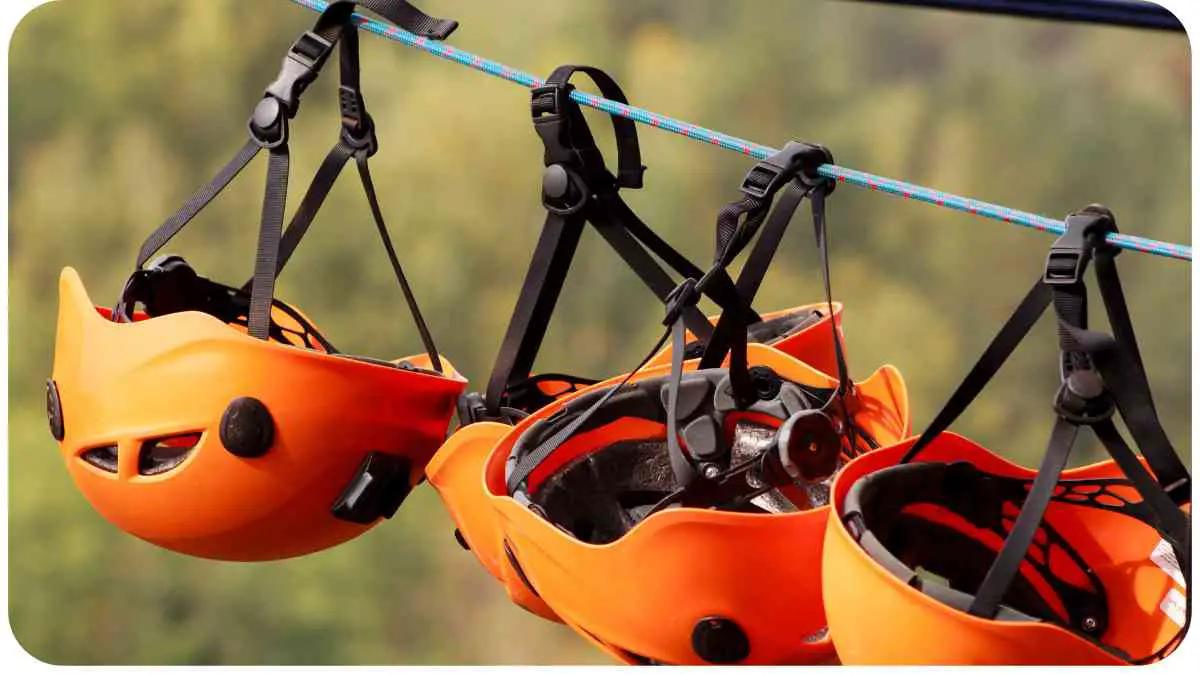Welcome to our comprehensive guide on helmet fit issues when engaging in climbing activities. Ensuring the perfect fit for your helmet is not just about comfort; it is essential for your safety. In this article, we will explore the various challenges climbers often encounter when it comes to their helmet’s fit.
By addressing these issues and providing expert advice, our goal is to help you achieve optimum comfort and safety on your climbs.
| Takeaway |
|---|
| Choosing the right climbing helmet is crucial for safety. |
| Consider factors such as fit, comfort, and adjustability. |
| Look for helmets with proper certifications and standards. |
| Pay attention to helmet ventilation for comfort during climbs. |
| Replace your helmet if it sustains significant impact or damage. |
2. Importance of a Properly Fitting Helmet
A properly fitting helmet is the cornerstone of any climber’s gear. It serves as a critical protective barrier, reducing the risk of head injuries and offering peace of mind. Finding the right fit is paramount as an ill-fitting helmet can compromise both comfort and safety, significantly affecting your climbing experience.
By understanding the common fit issues and their solutions, you can make informed decisions to enhance your enjoyment and reduce potential risks.
Exploring daring terrains is thrilling, yet challenging. “Dangerous Ice Climbing Routes” Are You Brave Enough to Attempt Them? demand courage, offering an exhilarating experience for the fearless adventurer.
3. Common Fit Issues and Their Solutions
3.1. Loose Fit
One common fit issue climbers encounter is a loose helmet. When a helmet is too loose, it can shift or even fall off during a climb. This compromises safety and increases the risk of head injury. To address this issue, it is important to adjust the helmet’s sizing system properly. Refer to the manufacturer’s instructions to ensure a snug yet comfortable fit. In Table 1, we provide an overview of top helmet brands renowned for their secure fit.
3.2. Tight Fit
On the other end of the spectrum, a helmet that is too tight can cause discomfort and headaches, hampering your climbing performance. To ensure a comfortable fit, consider helmets with adjustable padding or those that come with different size options. Table 2 highlights helmet brands known for their customizable fit solutions.
“Expert Tips” Ensuring Safety on the Mountain are invaluable. Whether a novice or seasoned climber, these insights guide you through potential hazards, ensuring a secure and enjoyable mountaineering journey.
3.3. Pressure Points
It is not uncommon to experience pressure points when wearing a helmet for extended periods. These pressure points can be caused by tight spots or protruding features within the helmet’s interior.
Opt for helmets with well-designed ventilation channels and padding that distribute the pressure evenly. Table 3 showcases helmet brands acclaimed for their effective pressure point mitigation.
3.4. Improper Strap Adjustment
To ensure a secure and comfortable fit, it is vital to properly adjust the helmet’s straps. Loose or incorrectly placed straps can compromise the stability of the helmet, increasing the risk of it coming off during a fall. Refer to the manufacturer’s instructions on how to adjust the straps correctly. Table 4 presents helmet brands that feature innovative strap adjustment systems.
3.5. Incorrect Positioning
Proper helmet positioning is crucial for effective protection. Improper positioning can leave vulnerable areas of your head exposed, reducing the helmet’s overall effectiveness. Ensure that the helmet sits level on your head, covering the forehead without obstructing your vision. Table 5 showcases helmet brands renowned for their attention to proper positioning.
When venturing into the unpredictable mountains, Survival Skills become paramount. This comprehensive guide equips climbers with essential knowledge on how to navigate emergencies, providing a lifeline in challenging situations.
3.6. Helmet Ventilation
Proper ventilation is essential for comfort during climbs, preventing excessive heat retention and minimizing odor buildup. Look for helmets with strategic vent placement and internal airflow channels to maximize breathability. Table 6 showcases helmet brands acknowledged for their superior ventilation systems.
4. Expert Tips for Finding the Right Fit
Finding the perfect helmet fit can be challenging, but with these expert tips, you’ll be on your way to a comfortable and safe climbing experience.
- Measure your head circumference: Before purchasing a helmet, measure the circumference of your head using a flexible tape measure. Use this measurement as a starting point when choosing the appropriate helmet size.
- Try before you buy: Visit a local gear shop and try on different helmet models. Each brand may have slightly different sizing and fit systems, so it’s crucial to find the one that fits your head shape comfortably.
- Pay attention to pressure points: When trying on a helmet, take note of any pressure points or discomfort. This may indicate an improper fit or the need for additional adjustment or padding.
- Ensure a snug fit without excessive pressure: The helmet should fit securely on your head, without any significant movement when you shake your head. However, it shouldn’t cause excessive pressure points or discomfort.
- Consider adjustability features: Look for helmets with adjustable straps, removable padding, or interchangeable inserts. These features allow you to customize the fit to your specific preferences and ensure long-term comfort.
- Seek professional advice: If you’re unsure about the fit, consult with professionals or experienced climbers who can provide guidance based on their expertise and personal experiences.
Before embarking on a mountaineering expedition, consult The Ultimate Mountaineering Checklist. This checklist acts as your compass, ensuring you pack the necessary essentials for a safe and successful climb.
5. Choosing the Right Helmet

When selecting a climbing helmet, several factors come into play. Consider the activity, helmet types and features, safety standards, and environmental conditions to make an informed decision.
5.1. Consider the Activity
Different climbing activities may require specific helmet characteristics. For example, outdoor rock climbing may necessitate a durable and impact-resistant helmet, while ice climbing might call for additional side coverage and insulation.
5.2. Helmet Types and Features
Helmets come in various types, including hardshell, hybrid, and foam helmets. Each type offers different levels of protection and construction. Additionally, features such as headlamp compatibility, adjustable visors, and removable ear covers are worth considering based on your needs.
5.3. Safety Standards and Certifications
When shopping for a helmet, check for appropriate safety standards and certifications. Look for helmets that comply with international safety standards like UIAA and CE. These certifications ensure that the helmet meets the necessary requirements for impact protection.
An improperly fitting climbing harness can be troublesome. Learn Why Your Climbing Harness Might Be Twisting and How to Fix It to enhance your climbing experience. This guide provides practical solutions to ensure your harness remains secure and comfortable throughout your ascent.
5.4. Environmental Considerations
Consider the environmental conditions you will encounter during your climbing activities. If you frequently climb in hot and humid conditions, opt for helmets with better ventilation. For cold weather adventures, helmets with insulation or the capacity to accommodate winter liners can be valuable.
6. Frequently Asked Questions (FAQs)
To address common queries regarding helmet fit issues, we have compiled a list of frequently asked questions and their answers.
6.1. How tight should a helmet fit?
A helmet should fit snugly on your head without causing discomfort or pressure points. It should stay in place when you shake your head, ensuring that it won’t shift or come off during a fall. Avoid a helmet that feels too tight, as it may lead to headaches or hinder circulation.
6.2. Can I wear a cycling helmet for climbing?
While a cycling helmet may provide some level of protection, it is not specifically designed for climbing activities. Climbing helmets are engineered to withstand different impacts and provide adequate coverage and ventilation for climbing-specific scenarios. It is best to choose a helmet specifically designed for climbing to ensure maximum safety and performance.
6.3. How often should I replace my helmet?
Helmets have a limited lifespan due to factors like wear and tear, exposure to UV rays, and the natural degradation of materials over time. Most manufacturers recommend replacing your helmet every 5-10 years, depending on usage and environmental conditions. However, if your helmet sustains a significant impact or shows signs of damage, it is crucial to replace it immediately.
6.4. Can I adjust the straps on my helmet?
Yes, most helmets feature adjustable straps. These straps allow you to fine-tune the fit and ensure a secure and comfortable position on your head. Refer to the manufacturer’s instructions for proper strap adjustment and ensure that the straps are neither too loose nor too tight.
6.5. How do I know if my helmet is positioned correctly?
To ensure proper positioning, make sure the helmet sits level on your head with the front edge just above your eyebrows. It should cover the sides and back of your head without obstructing your vision. Adjust the straps and sizing system to achieve a secure fit that allows for proper protection and maximum comfort.
7. Conclusion
In conclusion, ensuring a properly fitting helmet is crucial for comfort and safety while climbing. By addressing common fit issues such as loose or tight fits, pressure points, improper strap adjustment, incorrect positioning, and helmet ventilation, you can enhance your climbing experience and mitigate the risk of head injuries.
Remember to measure your head circumference, try on different brands and models, and pay attention to comfort and adjustability features. Seek professional advice when unsure about the fit, as experienced climbers can offer valuable insights.
Consider the specific requirements of your climbing activity, choose the right helmet type and features, and ensure the helmet meets the necessary safety standards and certifications. Take into account environmental factors to make an informed decision.
By prioritizing helmet fit and following the tips and advice provided, you can make sure your climbing adventures are both comfortable and safe. Happy climbing!
Further Reading
Here are some additional resources you can explore to expand your knowledge on helmet fit and safety:
- Climbing House: Best Helmets Buying Guide
- This comprehensive guide provides insights into different climbing helmet options and offers tips for selecting the best helmet for your needs.
- ScienceDirect: Assessment of Climbing Helmet Performance in Real-World Conditions
- This scientific article delves into the assessment of climbing helmet performance, examining the impact of various factors on helmet protection in real-world conditions.
- HSE Blog: Different Types of Safety Helmets
- Explore this blog post to gain an understanding of different types of safety helmets used across various industries.
FAQs
Here are the answers to some frequently asked questions about helmet fit and safety:
What should I consider when choosing a climbing helmet?
Consider the activity, helmet type and features, safety certifications, and environmental conditions for optimal helmet selection.
How often should I replace my climbing helmet?
Replace your climbing helmet every 5-10 years, depending on usage and the manufacturer’s recommendations. If your helmet sustains a significant impact or shows signs of damage, replace it immediately.
Can I wear my cycling helmet for climbing?
Cycling helmets are designed for different impacts and may not provide the necessary protection for climbing. It’s recommended to choose a helmet specifically designed for climbing.
How do I adjust the straps on my helmet correctly?
Refer to the manufacturer’s instructions for proper strap adjustment. Generally, the straps should be snug but not overly tight, ensuring a secure and comfortable fit.
How can I tell if my helmet is positioned correctly?
Ensure that the helmet sits level on your head, covering the forehead without obstructing your vision. Adjust the straps and sizing system to achieve a secure fit for proper protection and comfort.

Welcome to my blog! I’m Hellen James, and I’m incredibly passionate about rock climbing, bouldering, ice climbing, and mountaineering. Join me as I embark on thrilling adventures, conquer vertical challenges, and share my experiences and insights with fellow outdoor enthusiasts.


